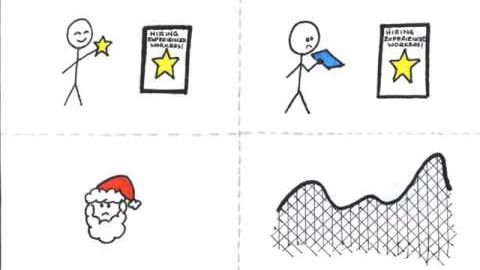
Subtitles & vocabulary
(Macro) Episode 19: Types of Unemployment
00
Huang LuLu posted on 2015/09/12Save
Video vocabulary
job
US /dʒɑ:b/
・
UK /dʒɒb/
- Noun (Countable/Uncountable)
- Something that must be done
- Regular work at which you earn money
A1
More change
US /tʃendʒ/
・
UK /tʃeɪndʒ/
- Transitive Verb
- To exchange one set of clothes for another
- To exchange one kind of money for another
- Noun (Countable/Uncountable)
- Exchange of one set of clothes for another
- Money in the form of coins instead of paper
A1
More Use Energy
Unlock All Vocabulary
Unlock pronunciation, explanations, and filters
